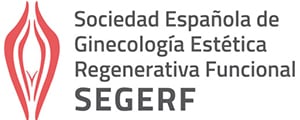VOLTAR
IMCAS Americas 2022
IMCAS Americas 2022
Programa
Adaptar ao meu fuso-horário a agenda da aula/congresso transmitida ao vivo
Fuso-horário de referência: (UTC-05:00) America, Bogota
S012
Genital beautification: fillers, fat grafting, and EBD (in collaboration with SEGERF)
Sala: Room 3
Data: quinta-feira 21 julho 2022 de 14:00 às 15:00
Formato: FOCUS SESSION > lectures covering a major topic of the congress
Data: quinta-feira 21 julho 2022 de 14:00 às 15:00
Formato: FOCUS SESSION > lectures covering a major topic of the congress
Apresentações desta sessão
| Horas | Palestrantes | Título da apresentação | Resumo | Número |
| 14:00 | HA applications in female genital cosmetic surgery | Visualizar | 116941 | |
| 14:15 | Laser security Er: YAG Smooth Vaginal in 113000 cases | 116942 | ||
| 14:30 | Clitoral hood alterations approach with a pulse shape design CO2 laser | 116671 | ||
| 14:45 | Discussion and Q&A | 115340 | ||













